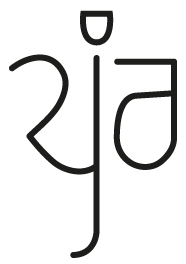

Who am I?
As an avid believer in Ayurvedic medicine, I started experimenting with Ayurveda in my late teens by visiting various doctors and trying out Panchakarma cures. It helped me get through some of the toughest times in my life and my inclination to natural medicine only got stronger. Finally, I reached a point when I yearned to deepen my understanding of Ayurveda, driven by a desire to make this knowledge accessible to everyone. What followed has been an enriching journey, guided by various teachers, continuous personal experiences, the insights of my clients, and a deep-seated passion for this eternal wisdom.
Fundamentally, Ayurveda is a simple multidimensional philosophy of life, deeply rooted in non-religious spirituality. It teaches that adaptation to the local environment and people where it is practiced is essential. I apply this basic principle of Ayurveda while working with clients, tailoring my advice to their origins, cultural and local eating and lifestyle habits. Additionally I also take into account the specific climatic conditions and available resources of their respective locations.
Through various Ayurvedic tools such as nutrition, lifestyle, manual therapies, herbs, and spiritual practices like yoga, pranayama, and meditation, I educate my clients. These tools also include mantra and sound healing. My goal is to help clients comprehend the subtleties in their physical body, mind, and soul, enabling them to live a meaningful, healthy, and fulfilling life.


The body and mind are the receptacles of diseases and happiness. The soul is eternal, simply an observer , devoid of all pathogenicity . Soul is detached of all happiness or misery found in the mind and body.
C.S, Su.S 1.56
Ayurveda was transmitted orally for thousands of years but somewhere around 2,000 BC to 3,000 BC the transformation of Āyurveda from an oral to a written tradition happened gradually & two schools of thought emerged– the School of Medicine and the School of Surgery which codified the āyurvedic teachings into texts. These texts today are used as references for all Ayurvedic therapies!
The word Āyurveda is composed of 2 words
Āyur (root āyus) = 'to live' or 'life'

Veda (root vid) = 'to know' or 'knowledge'

In the human body, these states of matter/elements are managed by 3 intelligent principles known as the doshas. These 3 principles are biological forces behind all functions of the body and they begin working prior to birth!
They produce the body structure, govern all physiological functions and are the causative factors in a disease process. They are also used to define seasonal cycles, cycles of day and night & cycles of age.
The correct understanding of the dosha at each of these levels is called the Tridosha theory which forms the foundation of the āyurvedic system. It is the key to a healthy and balanced life!
Ayurveda has its foundations in nature. All manifested matter in the universe is made up of 5 states of matter solid-state represented by Earth, liquid state by water, the gaseous state represented by wind, the power to change the state of any substance represented by fire, the field which is the source of all matter and which allows all other states to exists represented by ether.

ETHER
AKASHA

WIND
VAYU

FIRE
AGNI

WATER
JALA / AP

EARTH
PRITHVI


About
Ayurveda
The combination of these 3 doshas during conception gives rise to what is known as Prakriti. This combination is unique to each individual and determines his anatomy, physiology & psychology.
When these 3 doshas are in their natural state and are able to perform their functions in the body there is health, but when they are disturbed due to diet, lifestyle, environment etc there is dis-ease. The imbalance of the doshas is known as Vikriti. It reflects any aspects of diet, lifestyle, emotions, age, environment etc. that are not in harmony with one’s Prakriti.
Prakṛti determines for each individual their strengths, their weaknesses, their needs and their tendencies which one must take into account to live in good health, in balance and in harmony with oneself and the outside world. The basic constitution cannot be changed permanently. It can be affected by physiological or psychic dysfunction/disturbance because of one or more doṣa in excess. The therapeutic approach of Āyurveda is based on the determination of this disorder and then their treatment in order to bring the body into a state of equilibrium.


VATA
Principle of movement.
Controls all nervous functions & mobility in body.
Manages the Wind and Ether elements
Attributes
Dry
Light
Cold
Rough
Subtle
Mobile
Physical characteristics
Thin body frame
Dry
Cold & rough skin
Cold hands & feet
Irregular digestion
Difficulty to gain weight
Psychological
Desire for change and stimulation
Love for new ideas, things, approaches to life


KAPHA
Provides structure, support, stability & lubrication to the body.
Manages Water and Earth elements.
Attributes
Oily
Cold
Heavy
Slow/dull
Smooth
Slimy/sticky
Stable/static
Physical characteristics
Large heavy frame
Smooth
thick & soft skin
Thick
wavy hair
low but steady digestion
Gains weight easily
Psychological
Well-being of others is important, nurturing and family oriented in nature.
Desire stability and security


PITTA
Responsible for all metabolic and chemical functions.
Manages Fire and Water elements
Attributes
Oily
Sharp
Hot
Light
Malodorous
Spreading
Liquid
Physical characteristics
Medium well proportioned
Strong appetite
Warm hands & feet
Good digestive power
Gains & looses weight easily
Psychological
Desire for achievement & recognition.
Love working towards clear goals and achieving recognition and personal accomplishment,
Sharp and fiery in nature


.jpg)
_edited.jpg)



.jpeg)
.jpeg)
